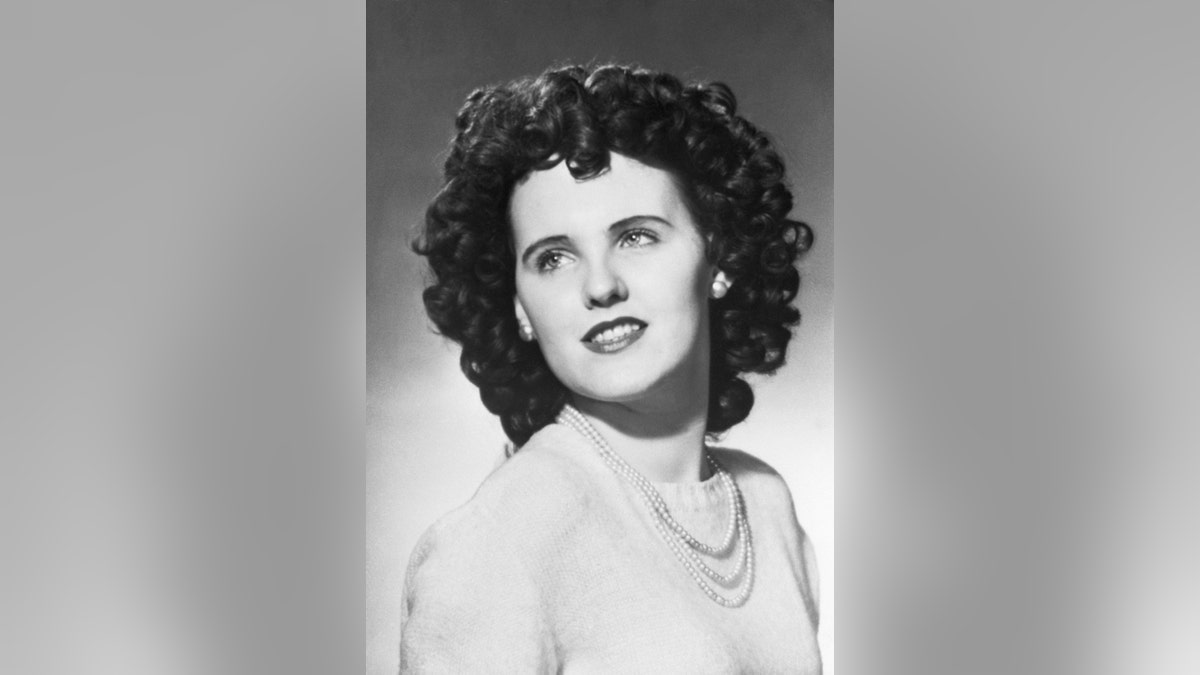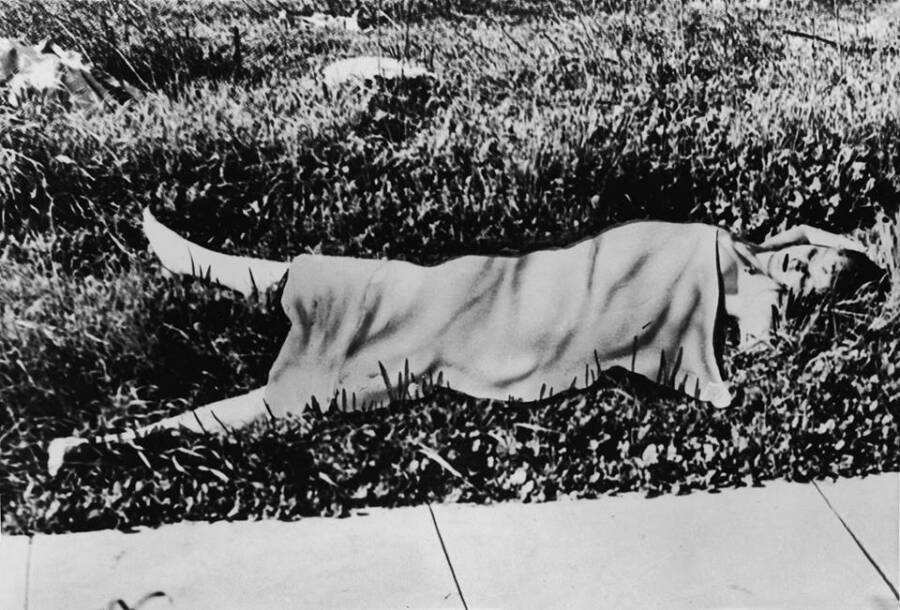Elizabeth Short's death has been one of the most haunting and perplexing cases in modern history. Known as the "Black Dahlia," her tragic story has captivated the world for decades. Her life, death, and the circumstances surrounding her murder have left an indelible mark on true crime enthusiasts and investigators alike. But what really happened to Elizabeth Short? Let's dive deep into the mystery and uncover the truth behind her death.
The Black Dahlia murder case remains one of the most infamous unsolved murders in American history. Elizabeth Short's death was not just a crime; it was a tragedy that shook the nation. Her face, frozen in a horrifying expression, became a symbol of the brutality and darkness that lurked beneath the surface of post-war Los Angeles.
From the moment her body was discovered on January 15, 1947, in a vacant lot in Leimert Park, Los Angeles, the world was captivated by the gruesome details of her death. Her case became a media sensation, and her face, captured in death, became an enduring image of mystery and horror. Let's explore the life, death, and legacy of Elizabeth Short, and try to understand why her story continues to haunt us to this day.
Read also:Simon Helberg Height The Inside Scoop Youve Been Waiting For
Biography of Elizabeth Short
Early Life and Background
Before we delve into the harrowing details of her death, let's take a moment to understand who Elizabeth Short really was. Born on July 29, 1924, in Boston, Massachusetts, Elizabeth grew up in a modest family. Her father, Cleo Short, abandoned the family when Elizabeth was just a child, leaving her mother, Phoebe Mae Short, to raise five daughters on her own.
Elizabeth's childhood was marked by instability and frequent moves. She attended various schools but struggled to find her place in the world. Despite her challenges, Elizabeth was known for her beauty and charm, qualities that would later earn her the nickname "Black Dahlia." Below is a summary of her personal details:
| Full Name | Elizabeth Short |
|---|---|
| Date of Birth | July 29, 1924 |
| Place of Birth | Boston, Massachusetts |
| Parents | Cleo Short (Father), Phoebe Mae Short (Mother) |
| Siblings | Four sisters |
Elizabeth Short Death: The Gruesome Details
The Discovery
On a chilly morning in January 1947, a local resident stumbled upon a horrifying sight in a vacant lot in Leimert Park. There, lying on the ground, was the lifeless body of Elizabeth Short. Her body was mutilated, and her face bore a grotesque expression that would haunt investigators for years to come.
Her body was found in two pieces, severed at the waist, with her face frozen in a macabre grin. The brutality of the crime was shocking, even by the standards of the time. Investigators were baffled by the precision and cruelty of the killer, who had taken great care to stage the crime scene.
Investigation and Theories
Initial Leads
The investigation into Elizabeth Short's death was extensive but ultimately inconclusive. Detectives pursued numerous leads, interviewing hundreds of potential suspects, but none led to a definitive conclusion. The case file grew to over 1,500 pages, filled with theories and speculation, but no concrete evidence.
- Several men were considered suspects, including a former boyfriend and a neighbor who had reportedly shown interest in Elizabeth.
- Some theories suggested that Elizabeth's death was the work of a serial killer, while others pointed to a personal vendetta.
- Despite the numerous theories, the identity of her killer remains unknown to this day.
Why Was Elizabeth Short Called the "Black Dahlia"?
The Nickname's Origin
The nickname "Black Dahlia" was given to Elizabeth Short by the press, inspired by the 1946 film "The Blue Dahlia." The name stuck, becoming synonymous with her tragic story. The moniker added a layer of intrigue to the case, capturing the public's imagination and cementing her legacy in true crime history.
Read also:Brigitte Macron Wedding Dress The Story Behind The Iconic Look
Her beauty, combined with the brutality of her death, created a stark contrast that captivated the media and the public. The "Black Dahlia" became a symbol of mystery and tragedy, a reminder of the darkness that can lurk in the hearts of men.
Elizabeth Short Death: The Impact on Society
The Media Sensation
Elizabeth Short's death became a media sensation, dominating headlines for months. The press coverage was relentless, with newspapers and magazines dedicating entire pages to the case. The public was both fascinated and horrified by the details of her murder, and the media played a significant role in shaping the narrative.
The case also highlighted the dark underbelly of post-war Los Angeles, a city that was rapidly growing and changing. The Black Dahlia murder became a symbol of the city's struggles with crime and corruption, and it served as a wake-up call for law enforcement and the public alike.
Psychological Analysis of Elizabeth Short's Killer
Profiling the Perpetrator
Over the years, numerous psychologists and criminologists have attempted to profile Elizabeth Short's killer. While no definitive conclusions have been reached, some common traits have emerged:
- The killer likely had a deep-seated hatred for women, possibly stemming from a traumatic childhood experience.
- He was methodical and meticulous, carefully planning and executing the crime.
- The mutilation of Elizabeth's body suggests a desire for control and domination, as well as a possible sexual motive.
Despite these insights, the identity of the killer remains a mystery, and the case continues to baffle investigators and true crime enthusiasts alike.
Legacy of the Black Dahlia
Inspiration for Art and Literature
Elizabeth Short's death has inspired countless works of art, literature, and film. The Black Dahlia case has been the subject of numerous books, documentaries, and movies, each offering a unique perspective on the tragedy. Her story continues to captivate audiences, serving as a reminder of the fragility of life and the darkness that can exist in the world.
Her legacy extends beyond the world of true crime, inspiring discussions about the treatment of women in society and the need for justice and accountability. The Black Dahlia case remains a powerful symbol of the fight for truth and justice in the face of overwhelming odds.
Modern-Day Implications of the Black Dahlia Case
Lessons for Today's Society
The Black Dahlia case has important lessons for today's society, particularly in the areas of crime prevention and justice. The case highlights the importance of:
- Improved forensic technology and investigation techniques.
- Greater public awareness and education about the dangers faced by women.
- Stronger support systems for victims and their families.
By learning from the past, we can work towards a safer and more just society for all.
Conclusion: The Enduring Mystery of Elizabeth Short Death Face
Elizabeth Short's death remains one of the most haunting mysteries of our time. Her face, frozen in a macabre expression, continues to captivate and terrify us, reminding us of the darkness that can exist in the world. While the identity of her killer may never be known, her legacy lives on, inspiring discussions about justice, truth, and the human condition.
If you've enjoyed this article, we invite you to share it with others and continue the conversation. The more we talk about these issues, the closer we come to finding solutions and bringing justice to those who have been wronged. Let's honor Elizabeth Short's memory by working towards a better, safer world for all.
Table of Contents
- Biography of Elizabeth Short
- Elizabeth Short Death: The Gruesome Details
- Investigation and Theories
- Why Was Elizabeth Short Called the "Black Dahlia"?
- Elizabeth Short Death: The Impact on Society
- Psychological Analysis of Elizabeth Short's Killer
- Legacy of the Black Dahlia
- Modern-Day Implications of the Black Dahlia Case
- Conclusion: The Enduring Mystery of Elizabeth Short Death Face



